I am developing an 3D app using the Helix3d Toolkit Viewport. The app also communicates with an OPC Server in the background and is continously receiving data. It basically works as it should but when i run it "longer" times like 5-10 days there is a possibility that it suddenly crashes.
The crash may occur when i change from the menu with the 3D Viewport to any other menu. In the menu of the 3D Viewport it continously adds and removes 3D Model to the View based upon the data coming from the OPC Server. So of course the 3D models will allocate their memory but it basically reaches its maximum when all models are constructed and displayed once. After having a look in the task manager, regarding the used memory, it reaches like 350 MB which is totally okay and it stays there... But like i said after a run time of 5 days and more it occurs that the program crashes when i simply hide the UserControl containing the 3D view.
In the debugger it says:
{"Insufficient memory to continue the execution of the program."} System.OutOfMemoryException
When this happens the Task Manager displays a value of around 2400 MB used for the app. But i really dont know why, because the 3D display and the server communication runs good for a relatively long time.
What i tried so far:
I installed 16 RAM (8GB before) in the PC...
From my experience so far the error appears not so often anymore...I gave the app a higher priority in memore allocation with
System.Diagnostics.Process.GetCurrentProcess().PriorityClass = System.Diagnostics.ProcessPriorityClass.High;
but i does not seem to have any effect at all.
I checked my code that it uses no Constructions of any new myClass(); in the methods and program parts which "run continously" so that i basically should not get "more" memory allocation
Before adding or removing a 3D Model i check system ressources
ObjectQuery wql = new ObjectQuery("SELECT * FROM Win32_OperatingSystem");
ManagementObjectSearcher searcher = new ManagementObjectSearcher(wql);
ManagementObjectCollection results = searcher.Get();
But it is not useful because i get the crash when i make a user input like changing a menu.. not while displaying models in 3d...
- I switched to 64 Bit Maybe had the same effect like increasing the RAM...
I would really appreciate if someone could give me a tip how to further locate my problem or maybe what to check exactly. In the background i also write on an MYSQL DB and it also allocates more memory in time but i dont think it has to do something with my original problem...
Concerning the error when it crashes
{"Insufficient memory to continue the execution of the program."} System.OutOfMemoryException
The Strack Trace is:
at System.Windows.Media.Composition.DUCE.Channel.SyncFlush()
at System.Windows.Interop.HwndTarget.UpdateWindowSettings(Boolean enableRenderTarget, Nullable channelSet)
at System.Windows.Interop.HwndTarget.UpdateWindowPos(IntPtr lParam)
at System.Windows.Interop.HwndTarget.HandleMessage(WindowMessage msg, IntPtr wparam, IntPtr lparam)
at System.Windows.Interop.HwndSource.HwndTargetFilterMessage(IntPtr hwnd, Int32 msg, IntPtr wParam, IntPtr lParam, Boolean& handled)
at MS.Win32.HwndWrapper.WndProc(IntPtr hwnd, Int32 msg, IntPtr wParam, IntPtr lParam, Boolean& handled)
at MS.Win32.HwndSubclass.DispatcherCallbackOperation(Object o)
at System.Windows.Threading.ExceptionWrapper.InternalRealCall(Delegate callback, Object args, Int32 numArgs)
at System.Windows.Threading.ExceptionWrapper.TryCatchWhen(Object source, Delegate callback, Object args, Int32 numArgs, Delegate catchHandler)
at System.Windows.Threading.Dispatcher.LegacyInvokeImpl(DispatcherPriority priority, TimeSpan timeout, Delegate method, Object args, Int32 numArgs)
at MS.Win32.HwndSubclass.SubclassWndProc(IntPtr hwnd, Int32 msg, IntPtr wParam, IntPtr lParam)
But i really cant figure out something with this.
Thanks for any advice.
Greetings Knally

